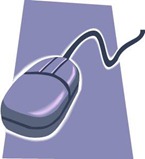The body of ISO 704 “Terminology work—Principles and methods” lists a bunch of important information for terminology work. But what stuck in my mind is actually the annexes, most of all Annex B.
In the current version 704:2009, Annex B is devoted to term-formation methods. In other words, it gives us the most important methods that we have available when creating new terms or appellations in English. It also notes what might be obvious to us, i.e. that these methods differ from language to language. For German, for example, we now have the new Terminologiearbeit – Best Practices which the German terminology association, DTT, published recently and which is more systematic about this topic than a standard might be.
Comprehensiveness need not be the goal of 704; awareness of these methods is more important. If half the content publishers, PMs, branding or marketing folks that I worked with in the IT world had read those five short pages, it would have done a world of good. Instead, I have heard colleagues mocking terminologists who, when coining new terms, pull out the Duden (the main German-German dictionary, similar to The Webster’s or Le Petit Robert) to apply one of these methods. She who laughs last, laughs best, though: New terms and appellations that are well-motivated—either rooted in existing language or deliberately different—last. Quickly invented garbage causes misunderstandings and costs money.
Annex B doesn’t claim to be comprehensive, but it lists the most important methods that can be used in term formation. Here are the three main methods and some examples:

- The first one is the creation of completely new lexical entities (terms or appellations), also known as neoterms. One way of creating a neoterm is through compounding, where a new designation is formed of two or more elements, for example cloud computing.
- Two methods that fall into the category of using existing forms are terminologization (see also How do I identify a term—terminologization) and transdisciplinary borrowing. An example of terminologization is cloud, where the everyday word cloud took on a very specific meaning in the context of computing, while the name of the computer virus Trojan horse was obviously borrowed from Greek mythology.
- Translingual borrowing results in new terms and appellations that originate in another language. English climbing language, for example, is full of direct loans from a variety of other languages; just think of bergschrund, cairn or scree.
The above are just a few examples to give you an impression of what could be learned by reading Annex B. Incidentally, these are methods. They need to be applied correctly, not randomly. I can already hear it, “but I used transdisciplinary borrowing to come up with this [junk]”. No. Even if your orthopedist uses minimally-invasive arthroscopic surgery to fix your knee, you want him to be sure that you actually need surgery, right? If you need to coin English terms or appellations on a regular basis, Annex B of ISO 704 is worth your while. I also like Annex C. More about that some other time.

 Let’s start with terms that have gone through what is called “terminologization”—the process by which a general-language word or expression is transformed into a term designating a concept in a
Let’s start with terms that have gone through what is called “terminologization”—the process by which a general-language word or expression is transformed into a term designating a concept in a